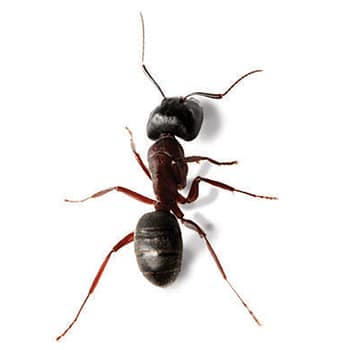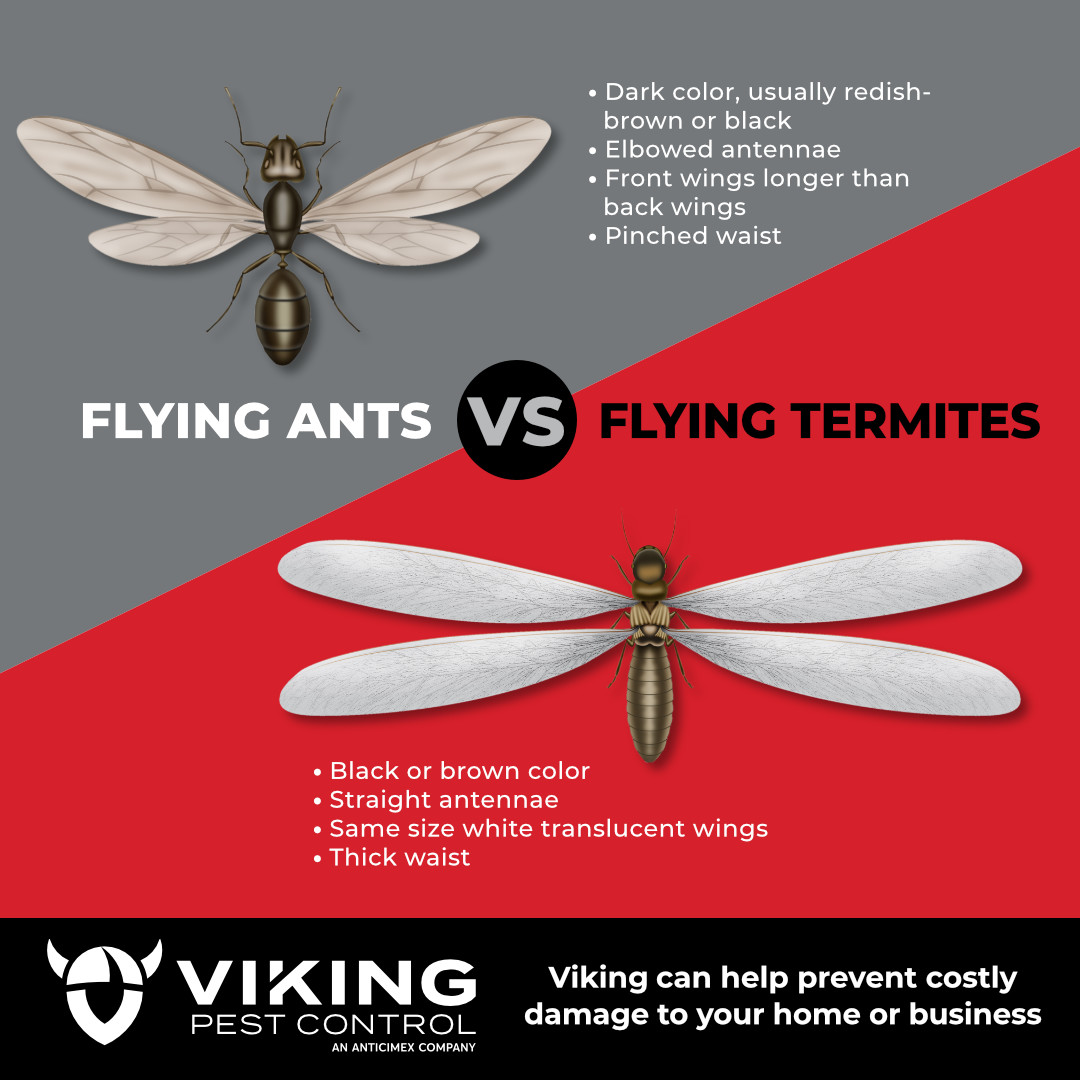Ant Control - What You Need to Know About Hiring an Ant Exterminator and Pest Control Service

If you live or do business in New Jersey, Pennsylvania, Maryland, or Delaware, you’ve probably seen or dealt with one of the six species of ants currently in the areas. Some of the most common ant species seen across these states include carpenter ants, pavement ants, Acrobat ants, odorous house ants and citronella ants. To protect your home or business from ants, you need to learn about the behavior of this pest, take steps for prevention, and find effective ant control treatment options should an infestation occur.
What Are Ants?
Ants are among the most common insects across the globe and including New Jersey, Pennsylvania, Maryland, and Delaware. There are currently over 12,000 identified species of ants worldwide with a general consensus belief that many more undiscovered variants exist. Within Maryland, New Jersey, Pennsylvania, and Delaware, there are six species of ants Viking primarily contends with. These pests are known to be social insects living in intricate community structures underground, in trees, in wood structures, or in above-ground mounds of dirt.
While many ants live off of a diet of nectar, fungus, and seeds, some can have unique diets that include birds, reptiles, and other small mammals. Ants are well known for attacking left-out food, trash, and crumbs. One of the most unique facts about ants is their ability to carry up to 5,000 times their body weight in food and materials for their living quarters!
“The vast majority of ants people actually see are sterile females,” says Craig S., Public Health Entomologist and Viking Pest Service Director. “Within the insect world only female ants are capable of stinging.”
How Do I Identify Ants?
Exterminators explain ants are small, six-legged insects with small bodies broken into three parts — a head, thorax, and abdomen. Most ants in the New Jersey, Pennsylvania, Maryland, and Delaware areas are black, red, and/or orange in color. Pest control experts at Viking Pest explain most likely, you won’t see ants alone as they are social creatures that live together and work together to accomplish tasks like finding food and building their colonies. If you see a long line of insects traveling toward a food source, they’re most likely ants.
“People assume small ants are baby ants, but the juvenile stage of an ant is actually a larva and does not look like adults,” says Craig S. “A small ant is just a small ant.”
Be careful, though, as ants do resemble termites and are often confused. Exterminators explain the main differences between the two are that ants have much larger heads, their bodies narrow between the heads and thorax areas, and they have antennae that appear to bend in the middle like elbows.
How Do I Get Ants?
Ants tend to move around frequently in search of food and water sources. While some of these food and water sources are within our control, others are not. As ants like to eat naturally occurring items like nectar, fungus, seeds, and some mammals, even the cleanest home or business in New Jersey, Pennsylvania, Maryland, or Delaware may be susceptible to an ant intrusion. Additionally, the frequent movement from location to location can create frustration when trying to get rid of ants with DIY methods. The ant pest control experts at Viking Pest have extensive knowledge of the habits of each type of ant found in New Jersey, Pennsylvania, Maryland, and Delaware is integral for ant extermination and ant control.
The experts at Viking explain ants are cold-blooded insects, their movement habits are greatly affected by the temperature. During the warmer months of the year in Delaware, Pennsylvania, New Jersey, and Maryland, ants move around frequently in search of food, water, and new shelter space. However, when the temperatures drop, ants look for areas to keep their internal temperature up.
Unfortunately, an unsecured home or building can seem quite inviting for an ant colony during the colder winter months. Just because ants are more active in the warmer months, it doesn’t mean you don’t run the risk of dealing with ants during the colder times of the year.

What Are the Effects of Ants In and Around My Home or Business?
Depending on the type of ants you’re dealing with at your home or business in NJ, PA, MD, or DE, the negative effects vary. Because ants are so small and will travel through almost any environment, they can track garbage and filth and, consequentially unhealthy bacteria. While most smaller ants do not bite, larger ants, like carpenter ants, can. In the 1980s, 75% of urban shade trees sampled in New Jersey were infested with carpenter ants. Fast forward several decades and the pests are still a problem in New Jersey, Maryland, Delaware, and Pennsylvania.
How Long Do Ants Live?
Throughout NJ, PA, MD, and DE, ants can live anywhere from a few weeks up to several years. Life span is dependent on the species of the ants, the conditions they live in, their exposure to natural predators, and what role the ants play within the colony. For example, the pest control experts at Viking Pest state queen ants can live up to an astonishing 30 years, while worker ants may only live a few weeks.
How Do I Prevent Ants in my Home or Business?
Ant prevention requires a multifaceted approach to have the best results. Exterminators advise not leaving excess food, trash, spilled liquids, pooled water, or crumbs around your home or business property. While these are not necessary to attract an ant infestation, there’s no need to make your property more appealing.
Beyond this, professional ant pest control is the ideal approach. It’s important to properly identify the type of ants you’re dealing with and understand the right approach to get rid of that particular species. The approach to dealing with red pavement ants outside is different than the approach to exterminate carpenter ants living inside your home or business in New Jersey, Pennsylvania, Maryland, and Delaware. The ant pest control experts at Viking Pest are integral in proper identification and will help you formulate an effective and minimally invasive ant control treatment plan.
Flying Ants
Flying ants are matured male and female ants with the sole purpose to leave the ant colony and mate. These flying ants, also known as swarmers, leave when it is time for the ant colony to expand. Flying ants leave their colony as the weather begins to warm and when there is high humidity. You can expect to see groups of flying ants during the spring and early summer throughout New Jersey, Pennsylvania, Delaware, and the Eastern Shore of Maryland. Flying ants also tend to swarm in large numbers to keep predators away. Once the male and female flying ant have mated, the male flying ant will die and the female flying ant will find a place to nest and begin its own colony. This female flying ant will now be the queen ant of her colony.
Are Flying Ants Dangerous?
Flying ants carry the same characteristics as their crawling counterparts. A common sugar ant does not bite or sting, so a flying sugar ant will not bite or sting. Some species of flying ants, such as flying carpenter ants, do have the ability to bite if they feel threatened. As long as you do not disrupt a swarm of flying ants while they are mating, you do not have to worry about being bitten.
Flying Ants vs. Termites. What Are the Differences?
Flying ants are sometimes mistaken for termites due to their swarming nature. The best ways to determine a flying ant from a swarming termite are their wings, antenna, and body shape. A swarming termite will have a straight antenna, equal wing lengths, and a narrow body that is all one width. A flying ant will have a bent antenna, larger front wings, smaller back wings, and a pinched waist. The best way to determine the type of flying insect you are seeing is to call the pest control professionals at Viking Pest. Our certified pest management experts will examine the flying insect and provide their findings as well as a proactive pest management plan to eliminate the pest and prevent costly damage to your home or business.
















